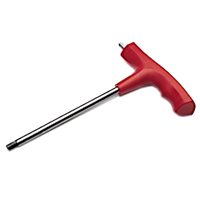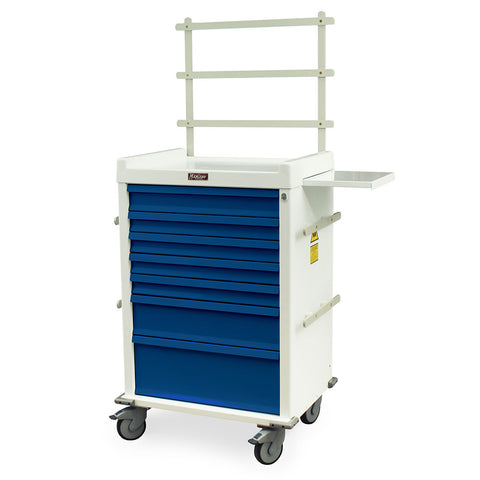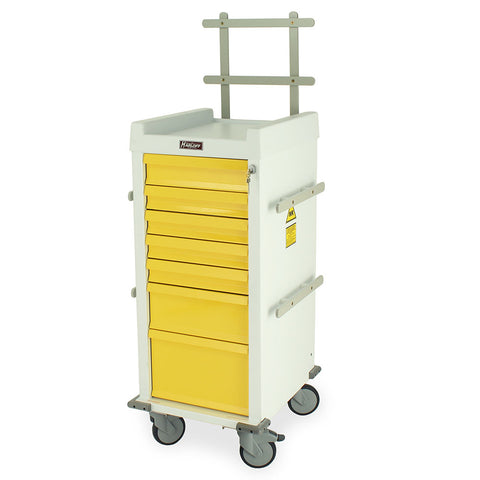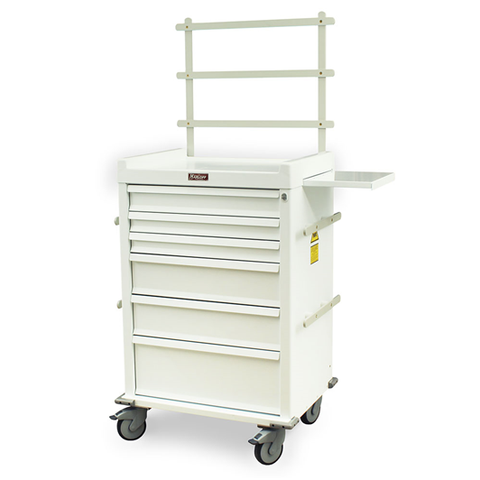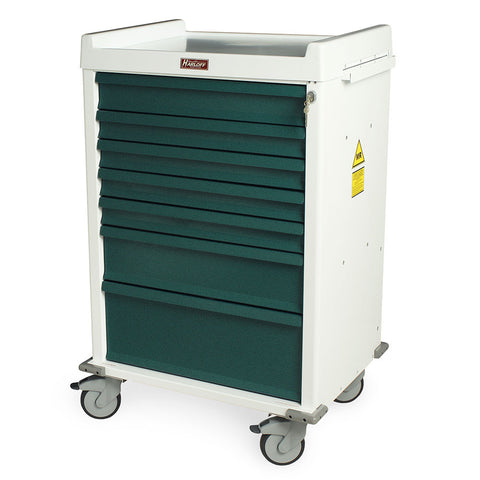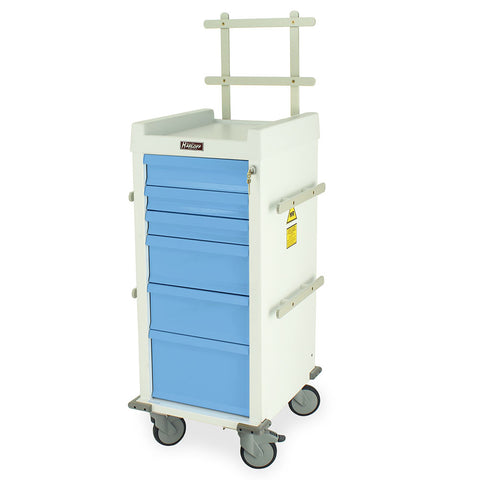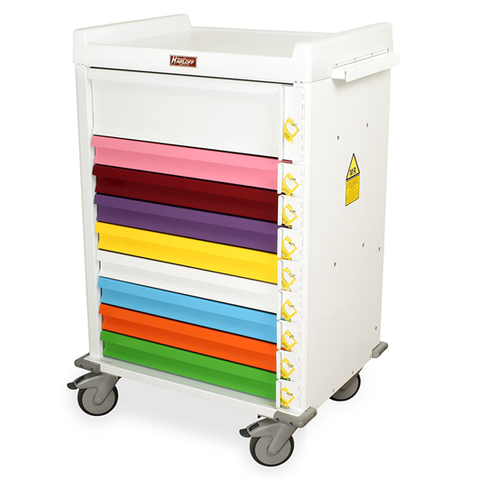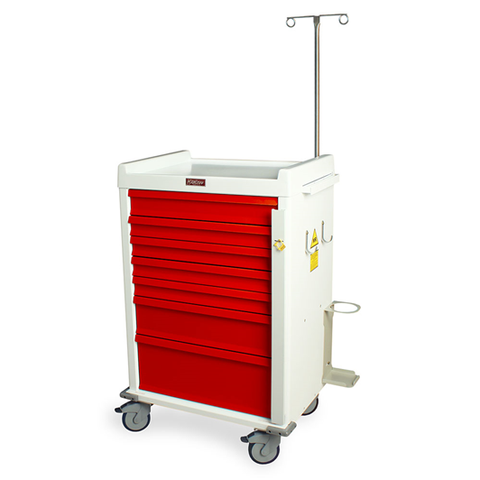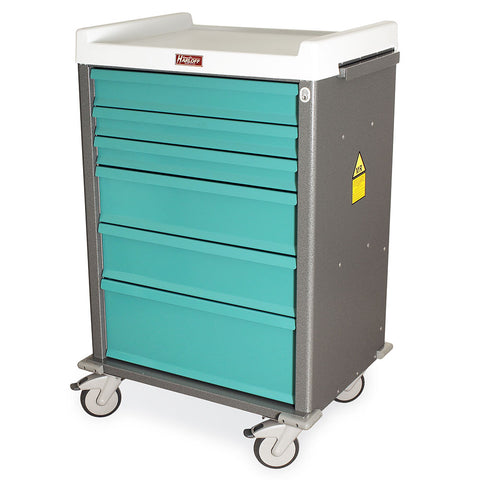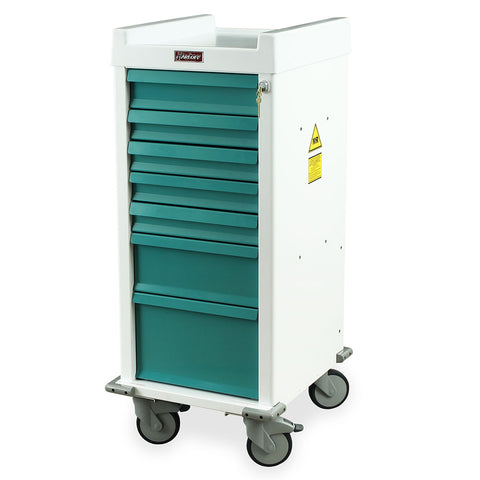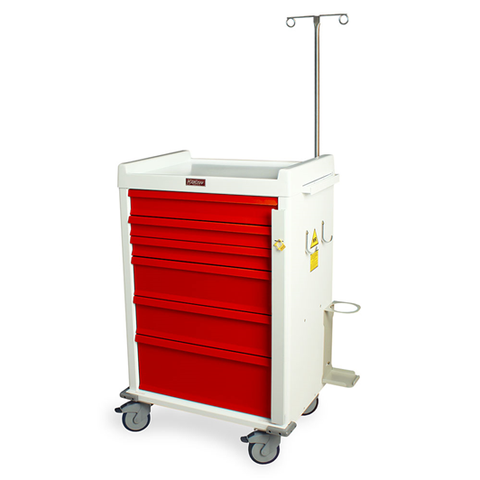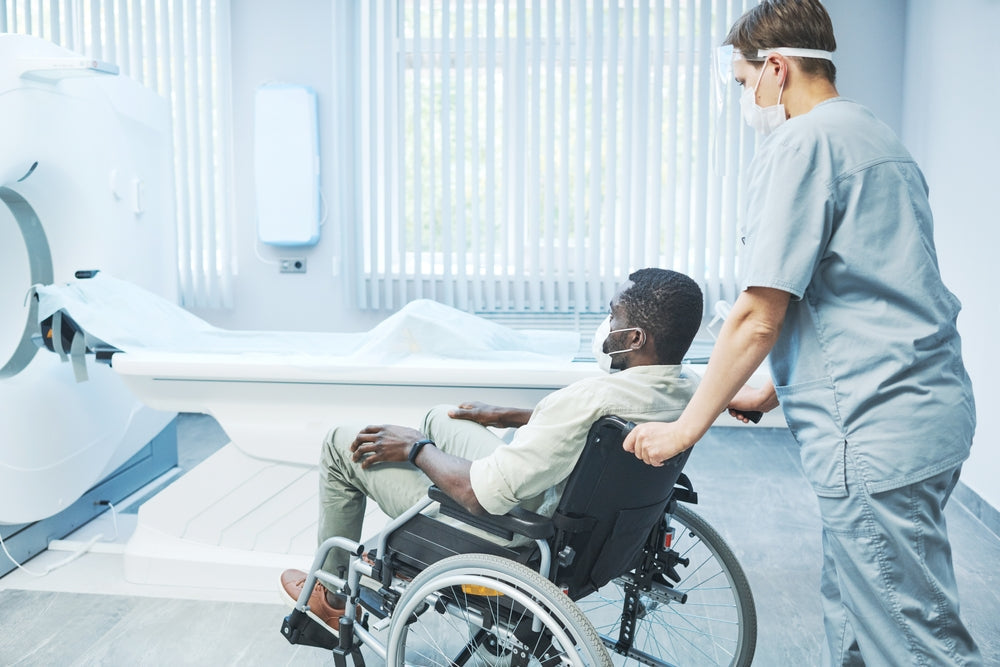MRI stretchers, also called MRI Conditional stretchers or MRI gurneys, are specialized transport devices designed for patient safety in MRI environments. Unlike standard stretchers, MRI Conditional stretchers are engineered to function safely under specific MRI conditions without being affected by the magnetic field or interfering with imaging. Hospitals, imaging centers, and outpatient clinics rely on these stretchers to improve workflow, reduce risk, and ensure patient comfort.
MRI Med provides a wide range of high-quality MRI Conditional stretchers designed to meet ASTM F2503 standards. Models such as the Adjustable Height Stretcher and Non-Ferrous Height Adjustable Stretcher combine durability, safety, and comfort.
For a detailed comparison of the best MRI stretchers on the market, see: Top 5 MRI Conditional Stretchers in 2025 [With Pricing].
What Is an MRI Conditional Stretcher?
An MRI Conditional stretcher is a patient transport device designed to safely operate only under defined MRI conditions. Unlike MR Safe items, which are safe in all MRI environments, MRI Conditional stretchers must be used within specified magnetic field strengths, RF exposure levels, and spatial gradients. MRI Med stretchers are tested to comply with ASTM F2503 standards, providing clear labeling on MR Conditional conditions.
MRI Med stretchers, like the Adjustable Height Stretcher, are built with non-magnetic stainless, aluminum, and polymer components, ensuring they pose no risk of magnetic attraction, heating, or functional interference during MRI scans.
These stretchers are essential for ensuring patient safety, protecting imaging quality, and streamlining hospital workflows, especially in high-volume MRI departments.
Understanding MRI Safety Requirements
MRI safety is paramount in Zones III and IV, where magnetic fields can exceed 1.5T to 3T. MRI Conditional stretchers must meet strict ASTM F2503 standards, specifying the exact conditions under which the stretcher can safely be used. This includes limits on field strength, spatial gradients, RF exposure, and specific absorption rates (SAR).
MRI Med provides detailed documentation for all their stretchers, allowing hospitals to train staff on safe handling procedures and ensure compliance. Using MRI Conditional stretchers correctly prevents magnetically induced accidents, such as projectile injuries or interference with imaging.
For a deeper understanding of MR Conditional labeling, see: What Makes a Stretcher MRI Conditional?.
What Makes a Stretcher MRI Conditional?
A stretcher becomes MRI Conditional due to material selection, engineering design, and rigorous testing. MRI Med stretchers use anodized aluminum, non-magnetic stainless, and composite polymer panels, all of which are non-magnetic and non-conductive.
Other design features include:
-
Non-ferrous wheels for smooth transport and minimal magnetic interaction.
-
Side rails and restraint systems to secure patients during transport.
-
Ergonomic handles and hydraulic height adjustment for staff ease of use.
These features allow MRI Med stretchers to operate safely in defined MRI conditions without compromising patient comfort or workflow efficiency.
Key Features of an MRI Conditional Gurney
Non-Magnetic Materials
The core feature of MRI Conditional stretchers is the use of non-magnetic materials. MRI Med stretchers avoid magnetic steel or iron, which are attracted to magnets and can become dangerous projectiles. Frames are made from aluminum and other non-magnetic materials, while the patient platform and padding use high-strength polymer composites.
This material selection ensures:
-
Zero magnetic attraction in MRI environments.
-
Reduced image artifacts.
-
Long-term durability and lightweight maneuverability.
MRI Med’s Non-Ferrous Height Adjustable Stretcher is an excellent example of a stretcher engineered for safety and precision in MRI suites.
Weight Capacity and Dimensions
MRI Conditional stretchers must accommodate a wide range of patients while maintaining MRI safety. MRI Med stretchers support patients up to 600 lbs and feature adjustable heights and lengths.
Hydraulic or gas-spring adjustments allow staff to:
-
Easily transfer patients from hospital beds to MRI tables.
-
Maintain ergonomic posture, reducing staff fatigue.
-
Ensure smooth operation without disrupting the MRI scanner or imaging process.
The Adjustable Height Stretcher provides an ideal balance of strength, flexibility, and MRI compliance.
Patient Comfort and Safety
MRI scans can be stressful or lengthy. MRI Med stretchers include:
-
Multipad positioning systems to support head, back, and limbs.
-
Safety straps and side rails to prevent accidental falls.
-
MRI Safe accessories, such as headrests and optional headphones for patient comfort.
Safe padding and restraint systems reduce pressure points, which is critical for elderly or immobilized patients.
For maintenance tips and maximizing comfort, see: How to Maintain MRI Stretchers for Long-Term Use.
Wheel Design and Maneuverability
Maneuverability is crucial in hospitals, especially in tight MRI corridors. MRI Med stretchers feature 360-degree swivel wheels with locking brakes. Wheels are non-ferrous, minimizing magnetic interference and ensuring stability under full patient load.
This design allows staff to safely transport patients from ER rooms, wards, or outpatient clinics into the MRI suite without risk.
For comparisons with other transport devices, see: MRI Stretcher vs. Standard Stretcher: What's the Difference?.
MRI Stretcher Certifications and Compliance
ASTM F2503 Standards
ASTM F2503 defines MR Safe, MR Conditional, and MR Unsafe labeling, including testing requirements for magnetically induced displacement, torque, and RF heating. MRI Med stretchers meet or exceed these standards, providing hospitals with the confidence that every device is tested and certified for safe use.
Documentation includes:
-
Maximum MRI field strength (e.g., 1.5T, 3T, 7T).
-
Spatial gradient limits.
-
RF exposure thresholds.
-
Operational and configuration requirements.
Learn more about ASTM F2503 in: ASTM F2503: What It Means for MRI Equipment Buyers.
MR Conditional vs. MR Safe vs. MR Unsafe
It is essential to understand these definitions:
Equip Your Team with Tools They Can Trust
Get high-quality, MRI-dedicated equipment that supports safer scans, better positioning, and smoother patient care.
View Trusted Products-
MR Safe: Safe in all MRI environments; usually non-metallic items.
-
MR Conditional: Safe only under specified MRI conditions, including most MRI stretchers.
-
MR Unsafe: Hazardous in any MRI environment; includes ferromagnetic tools.
MRI Med stretchers are MR Conditional, providing safety, comfort, and efficiency when used under documented conditions.
For safety guidance, see: Understanding MRI-Safe, MR-Conditional, and MR-Unsafe Labels.
Why Compliance Matters
Compliance ensures:
-
Patient and staff safety.
-
Smooth workflow efficiency.
-
Reduced liability for hospitals.
-
Protection of MRI equipment from damage.
MRI Med stretchers, fully compliant with ASTM F2503, prevent magnetically induced accidents, minimize image artifacts, and streamline MRI suite operations.
For practical insights, see: Why MRI Stretchers Are Non-Magnetic – Explained.
Top Use Cases for MRI Stretchers
Hospitals and Imaging Centers
MRI Med stretchers are used daily in hospital imaging departments for safe patient transfers. Adjustable heights and durable materials allow staff to move patients quickly while maintaining safety and comfort.
Emergency Departments
MRI Conditional stretchers enable rapid patient response in emergencies. MRI Med’s stretchers allow patients to be transferred safely and efficiently from the ER to the MRI scanner without compromising imaging accuracy.
Outpatient Clinics
Outpatient imaging centers benefit from fast and safe patient transport, minimizing delays and improving patient satisfaction. MRI Med stretchers reduce the risk of incidents and ensure smooth operations even during high patient volume.
For workflow optimization, see: How to Design an MRI Suite Transport Workflow.
How to Choose the Right MRI Stretcher
Factors to Consider Before Purchasing
Key considerations include:
-
Weight capacity and dimensions.
-
MRI safety compliance and ASTM certification.
-
Patient comfort features like padding and straps.
-
Maneuverability including wheel design and brakes.
MRI Med offers a range of stretchers that balance ergonomics, durability, and MRI compliance.
Common Pitfalls to Avoid
Avoid:
-
Uncertified stretchers that are not ASTM F2503 compliant.
-
Devices with ferromagnetic parts or poor padding.
-
Stretchers that are difficult to maneuver or adjust.
MRI Med stretchers are designed to prevent these issues while ensuring safe patient transport.
Recommended Brands and Models
Top MRI Med stretchers include:
For comparisons, see: Top 5 MRI Conditional Stretchers in 2025 [With Pricing].
FAQ:
-
Can MRI Stretchers Be Used Outside the MRI Room?
Yes, MRI Conditional stretchers are safe outside the MRI suite, but they are specifically designed for MRI environments, maximizing safety and workflow efficiency. To improve workflow and reduce transfer time, consider making all stretchers MRI Conditional, eliminating the need to transfer patients from a magnetic stretcher to a MRI Conditional model.
-
How Do I Clean and Maintain an MRI Conditional Gurney?
Cleaning should follow manufacturer guidelines, avoiding harsh chemicals that damage polymer surfaces. MRI Med stretchers feature removable pads and smooth surfaces, making sanitation simple. Inspect wheels, brakes, and locking mechanisms regularly to ensure long-term reliability.
-
Can MRI Conditional Stretchers Be Used With All MRI Machines?
MRI Conditional stretchers are tested for specific magnetic field strengths and spatial gradients. While MRI Med does offer some stretchers tested MR Conditional to 7T, most MRI Med stretchers are suitable for 3T MRI systems. Always check the manufacturer’s MR Conditional documentation before use. Using a stretcher outside its certified conditions can risk patient safety or imaging quality.
-
Are MRI Stretchers Compatible With Other Hospital Equipment?
Yes, MRI Med stretchers are designed to be compatible with MRI Safe or Conditional accessories, such as patient monitoring devices, infusion pumps, and oxygen systems that are also MR Conditional. Using only conditional devices ensures patient safety and smooth workflow in MRI suites.
-
Can MRI Stretchers Be Transported Between MRI Suites and Other Departments?
Yes. MRI Conditional stretchers are fully functional outside the MRI suite, making them suitable for moving patients from ER, wards, or outpatient areas. MRI Med offers a variety of stretchers that can be lightweight, non-magnetic, and have ergonomic wheels, allowing safe transport without risk of interference with other medical equipment.
